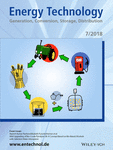Journal list menu
Export Citations
Download PDFs
Cover Pictures
Front Cover: Mild Upgrading of Bio-Crude Pyrolysis Oil: A Concept Based on Bio-Based Alcohols with Selective Water Adsorption (Energy Technol. 7/2018)
- Page: 1208
- First Published: 18 December 2017
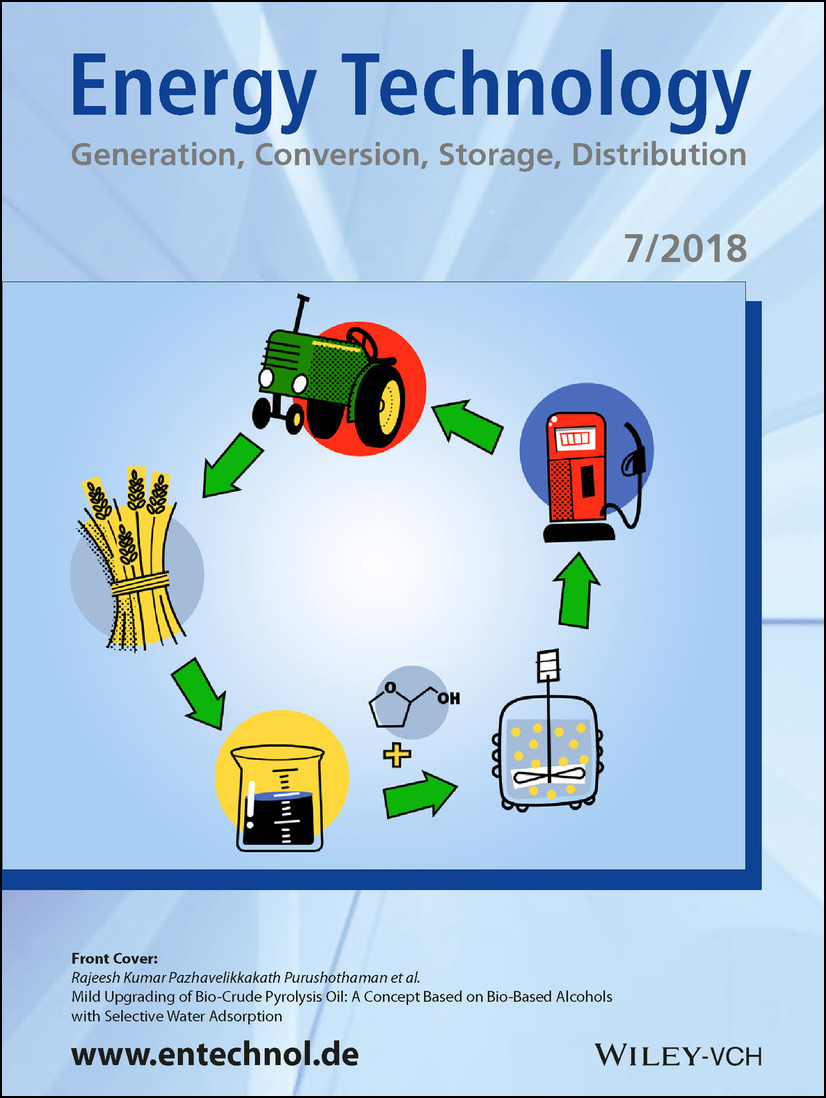
Towards pyrolysis oil commercialization: Bio-crude pyrolysis oil is obtained by a process called fast-pyrolysis, in which almost any organic-based feedstock is thermally processed at moderate temperatures, in the range of 400–600 °C, in the absence of oxygen at short residence times. Ideally agricultural residues or municipal solid waste are preferred as feedstocks. After condensing the vapors in a cooling tray, a dark-brown bio-liquid is obtained. The quality of the so-obtained fast pyrolysis oil has some challenges for its direct use as transportation fuel. Low-caloric value, high viscosity, and corrosion are the major obstacles for its implementation in conventional engines. There have been sustained efforts to improve the quality of the oil. In this study the authors report a breakthrough concept to improve the acidic properties, by means of a combined catalysis and adsorption approach, using tetrahydrofurfuryl alcohol, which is a biomass-derived bulk chemical. Under optimal conditions, the ultimate acidity and water content of the upgraded product are marginal. This makes the commercialization of the bio-oil blends not a myth, but a reality, being potentially able to fuel farmers’ tractors and bringing us a step closer to closing the sustainability loop. More details can be found in the Communication by Rajeesh Kumar Pazhavelikkakath Purushothaman et al. on page 1209 in Issue 7, 2018 (10.1002/ente.201700719).
Communications
Mild Upgrading of Bio-Crude Pyrolysis Oil: A Concept Based on Bio-Based Alcohols with Selective Water Adsorption
- Pages: 1209-1213
- First Published: 06 December 2017
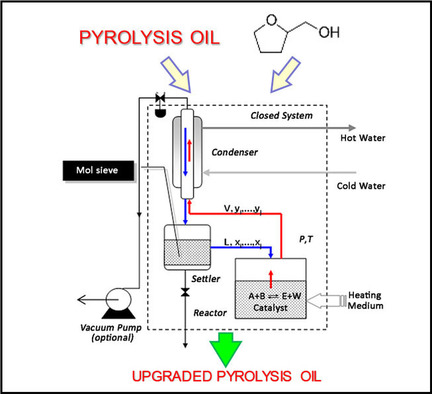
Upgrading of pyrolysis oil: Fast pyrolysis oil can be optimally upgraded through alcoholysis using tetrahydrofurfuryl alcohol, a biomass-derived bulk chemical. Water is continuously separated from the condensate mixture using a molecular sieve. The final acidity and water content of the optimal upgraded biocrude oil are negligible under the applied reaction conditions.
An Electrospun Nanofiber Membrane as Gel-Based Electrolyte for Room-Temperature Sodium–Sulfur Batteries
- Pages: 1214-1219
- First Published: 16 April 2018

Getting your fiber: A safe gel polymer electrolyte (GPE) membrane based on polyacrylonitrile swollen in PEGDME-NaCF3SO3 solution is proposed here for applications in room temperature Na–S batteries. A high capacity is achieved over 40 cycles, and the selected electrolyte configuration also provides improved safety by replacing the highly reactive sodium perchlorate (NaClO4) salt previously used in literature.
Full Papers
Hydrothermal Carbon Doped Form-Stable Inorganic Hydrate Salts Phase Change Materials with Excellent Reutilization
- Pages: 1220-1227
- First Published: 07 December 2017
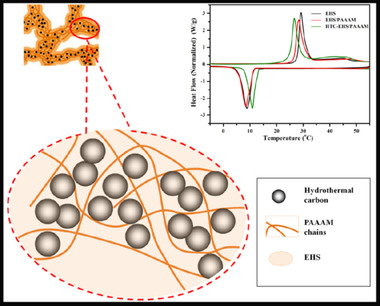
Form with function: The form-stable phase-change material the combination of hydrothermal carbon (HTC) and a eutectic hydrate salt mixture/ poly (acrylamide-co-acrylic acid) copolymer (EHS/PAAAM) shows high thermal conductivity with excellent heat storage capacity and reusability, which also addresses the liquid-state leakage problem and supercooling effects. It can be considered as a promising heat storage material in the energy storage field.
Mn3O4 Nanoparticle-Decorated Carbon Cloths with Superior Catalytic Activity for the VII/VIII Redox Reaction in Vanadium Redox Flow Batteries
- Pages: 1228-1236
- First Published: 16 January 2018
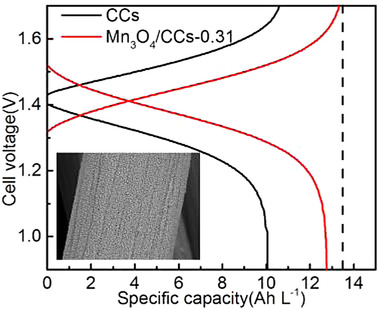
A carbon cloth supported by electrochemically deposited Mn3O4 nanoparticles exhibits a catalytic effect on the VII/VIII redox reaction, which results in a significant reduction of the polarization overpotential. Therefore, a vanadium flow battery with this electrode achieves an energy efficiency as high as 88 %, which is 17 % higher than that of the battery with the pristine carbon cloth at the same current density of 100 mA cm−2.
Process Simulation and Energy Analysis of Chemical Looping Combustion and Chemical Looping with Oxygen Uncoupling for Sawdust Biomass
- Pages: 1237-1247
- First Published: 20 November 2017
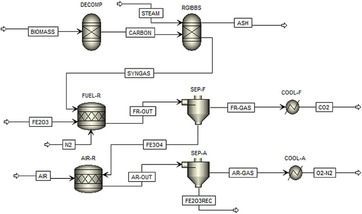
Chemical looping combustion (CLC) and chemical looping with oxygen uncoupling (CLOU) using sawdust biomass as fuel is reported. Iron-based (Fe2O3-Al2O3) and copper-based (CuO-ZrO2) materials are used as oxygen carrier particles in CLC and CLOU, respectively. Experimental results for CLC of biomass are validated using carbon capture efficiency and oxide oxygen fraction. Sensitivity analysis is performed to observe the effect of the gasification agent and the solid circulation rate on carbon capture efficiency. The predicted results can be used for scaling up the simulation with higher biomass feeding rates. It is expected that a small difference in energy output (in CLC and CLOU) for biomass fuel as compared to coal will be obtained due to the higher volatile content in biomass.
Electrical Characteristics of a Hybrid Photovoltaic/Thermoelectric Generator System
- Pages: 1248-1254
- First Published: 11 December 2017
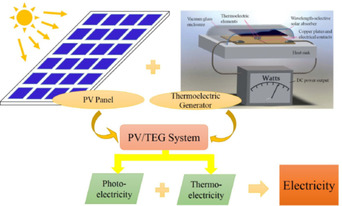
Systems approach: A combined photovoltaic (PV) and thermoelectric generator (TE) system is created by combining a photovoltaic module and a thermoelectric generator and in this system, the photovoltaic module can be cooled down by the thermoelectric component. Extra thermal electricity is generated from the temperature difference between the backside of the photovoltaic module and the environment. The photovoltaic conversion efficiency of the PV/TEG integration system increases by 3.9 % compared to the PV module alone and the total system efficiency reaches 5.9 %.
Carbon-Encapsulated SnO2 Core–Shell Nanowires Directly Grown on Reduced Graphene Oxide Sheets for High-Performance Li-Ion Battery Electrodes
- Pages: 1255-1260
- First Published: 15 December 2017
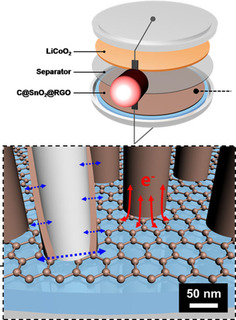
Carbon-encapsulated SnO2 core–shell nanowires directly grown on reduced graphene oxide sheets are proposed as anode platforms for electrochemical Li-ion storage applications. The carbon shells and the reduced graphene oxide sheets contribute to the electronic conductivity and the strain relaxation of the electrode structures, thereby leading to improvement in the rate capability and the cycle durability of the Li-ion battery cells.
Hydrothermal Decarboxylation of Corn Distillers Oil for Fuel-Grade Hydrocarbons
- Pages: 1261-1274
- First Published: 30 March 2018
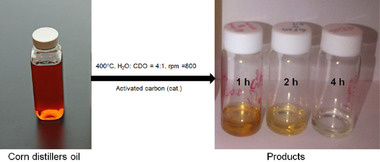
Not just corny results: Renewable liquid hydrocarbons containing mainly heptadecane and pentadecane are produced by one-pot hydrothermal decarboxylation of corn distillers oil using low-cost activated carbon. The renewable liquid hydrocarbons have ideal properties for commercial fuels including density, heating value, cloud point, and pour point.
Hot-Pressed Hybrid Electrodes Comprising Silver Nanowires and Conductive Polymers for Mechanically Robust, All-Doctor-Bladed Semitransparent Organic Solar Cells
- Pages: 1275-1282
- First Published: 26 February 2018
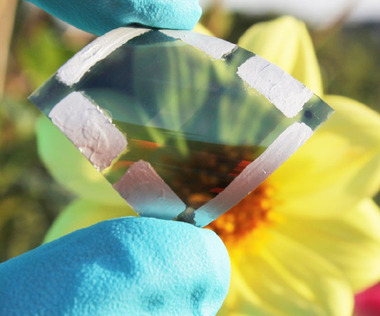
Just what the doctor-blade ordered: All-doctor-bladed semitransparent organic solar cells were fabricated on mechanically flexible PET substrates in air using environmentally benign solvents. Dispersions from conductive polymers and silver nanowires as bottom and top electrode were integrated into a printable, robust, four-layer solar cell architecture. Solar cells with photoactive areas of 0.5 cm2 yielded high power conversion efficiencies with a visible light transmission of 25 %.
Improving the Performance of Perovskite Solar Cells Through Solvent Vapor Annealing-based Morphology Control of the Hole-Transport Layer
- Pages: 1283-1289
- First Published: 16 April 2018
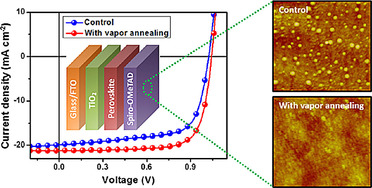
Taking control: Using solvent vapor annealing to control the morphology of spiro-OMeTAD layers using a solvent vapor annealing method leads to a smoother morphology of the spiro-OMeTAD layer, which further improves the contacts between perovskite/spiro-OMeTAD and spiro-OMeTAD/Au. This significantly improves the performance of perovskite solar cells resulting in increased efficiency.
Compressed Air Energy Storage Models for Energy Arbitrage and Ancillary Services: Comparison Using Mixed Integer Programming Optimization with Market Data from the Irish Power System
- Pages: 1290-1301
- First Published: 17 December 2017
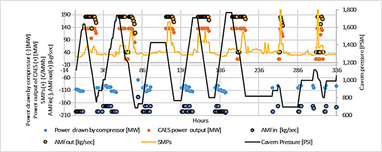
The thermo-economic (TE) model and the fixed efficiency (FE) model are tested in a study of the economic potential of compressed air energy storage (CAES) for arbitrage and ancillary services in the Irish power system. The two models are compared by simulating the technical and economic performance of CAES under deregulated market conditions. Data from the Irish power system are used and both models are applied to various system specifications and market scenarios.
Ba-doping to Improve the Cycling Stability of LiNi0.5Mn0.5O2 Cathode Materials for Batteries Operating at High Voltage
- Pages: 1302-1309
- First Published: 02 January 2018
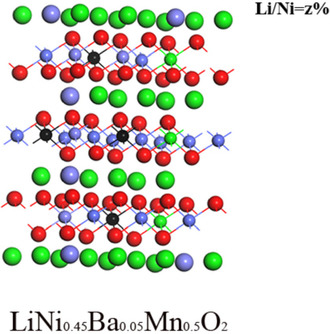
Achievements: In the layered LiNi0.5Mn0.5O2 cathode material, Ni2+ and Li+ have similar radii, so that some Ni2+ ions may occupy the Li sites, which is called Li/Ni cation mixing. Here, Ba ions are used to replace Ni ions to lower the degree of Li/Ni cation mixing. It is found that Ba ions are successfully doped into the structure, and Ba-doping increases the stability of the structure.
Design of Electroactive Carbon Fibers Decorated with Metal and Metal-Phosphide Nanoparticles for Hydrogen Evolution Technology
- Pages: 1310-1331
- First Published: 12 February 2018
Redox Behavior of a Copper-Based Methanol Reformer for Fuel Cell Applications
- Pages: 1332-1341
- First Published: 17 December 2017

Evaluation of methanol reformer: Remarkable cycling performance and operation under steam reforming of methanol reaction at 210 °C is obtained by using an attractive reformer arrangement incorporating a CuZnAlOx catalyst into the fuel cell anode compartment. In accordance with in situ characterization under similar conditions, controlled passivation during shut-down prevents undesirable sintering of the active metallic copper.
Binuclear Metal Phthalocyanines Catalysis for Li/SOCl2 Batteries: An Experimental and Computational Study
- Pages: 1342-1351
- First Published: 20 December 2017
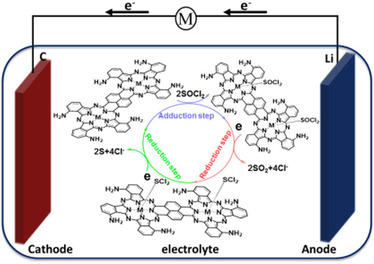
Four kinds of binuclear metal phthalocyanines (MPcs) complexes, M2(PcTN)2Nap and M2(PcTA)2Nap (M=NiII, ZnII), are applied in Li/SOCl2 batteries as electrocatalysts to enhance capacity and discharge voltage. Density functional theory (DFT) calculations are performed to investigate the improvement in electrochemical performance caused by MPcs. A close relationship between MOs and catalytic performance of MPcs is confirmed. The variation in reduction potentials of electrolyte SOCl2 is also related to the MOs. Based on cyclic voltammetry measurements and the energy gap of MOs, the reaction mechanism that involves an irreversible two-step electron transfer process is found and a better strategy for the selection of electrocatalysts is obtained.
State-of-Power Estimation of Li-Ion Batteries Considering the Battery Surface Temperature
- Pages: 1352-1360
- First Published: 15 January 2018
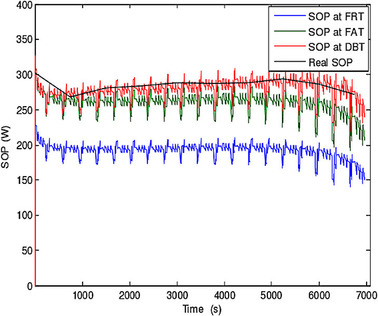
A novel state estimation method considering the battery surface temperature is proposed. The capacity and resistance of the Li-ion battery are tested at different temperatures to find the relations between capacity and temperature and between resistance and temperature for more accurate prediction of the parameters. Then, a method for using a constrained multi-parameter algorithm (CMPA) and an extended Kalman filter (EKF) technique is used to estimate the state-of-power of Li-ion batteries.
Effect of Residual Lithium Rearrangement on Ni-rich Layered Oxide Cathodes for Lithium-Ion Batteries
- Pages: 1361-1369
- First Published: 02 March 2018
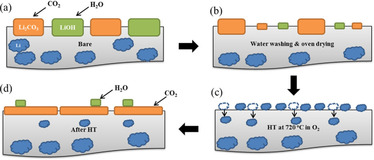
Keeping it clean: A water washing process can effectively reduce the presence of residual lithium with minimal effects on the lithium-ion battery cell performance. The authors investigate the effects of varying the amount of water used for washing and the temperature used to evaporate the water on Li1.00Ni0.80Co0.15Mn0.05O2.
Controlling Competitive Side Reactions in the Electrochemical Upgrading of Furfural to Biofuel
- Pages: 1370-1379
- First Published: 14 March 2018
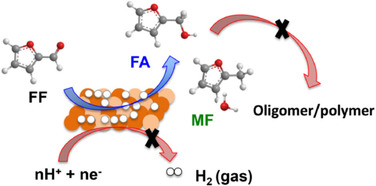
All for one, and furfural! Both furfuryl alcohol and 2-methylfuran are synthesized using electrochemical hydrogenation and hydrogenolysis (ECH) of furfural in acidic electrolyte using a Cu electrode. The authors investigate the role of concurrent side reactions including the hydrogen evolution reaction and polymerization of furanic compounds during ECH, as well as the potential dependence of the reaction pathway for ECH of furfural. The undesired side reactions can be inhibited by controlling the concentration of furfural and applied potential.
A Quasi 2D Flexible Micro-Supercapacitor Based on MnO2//NiCo2O4 as a Miniaturized Energy-Storage Device
- Pages: 1380-1391
- First Published: 24 December 2017
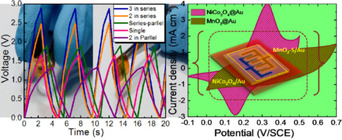
A miniaturized and flexible asymmetric micro-supercapacitor (ASC) based on surface-modified MnO2@Au and a thin nanosheets of NiCo2O4@Au (termed 2D-qMnO2//NiCo2O4 micro-supercapacitor) is fabricated. The fabricated lightweight, flexible micro-supercapacitor exhibits a good areal capacitance and high energy density with excellent cycling stability.




